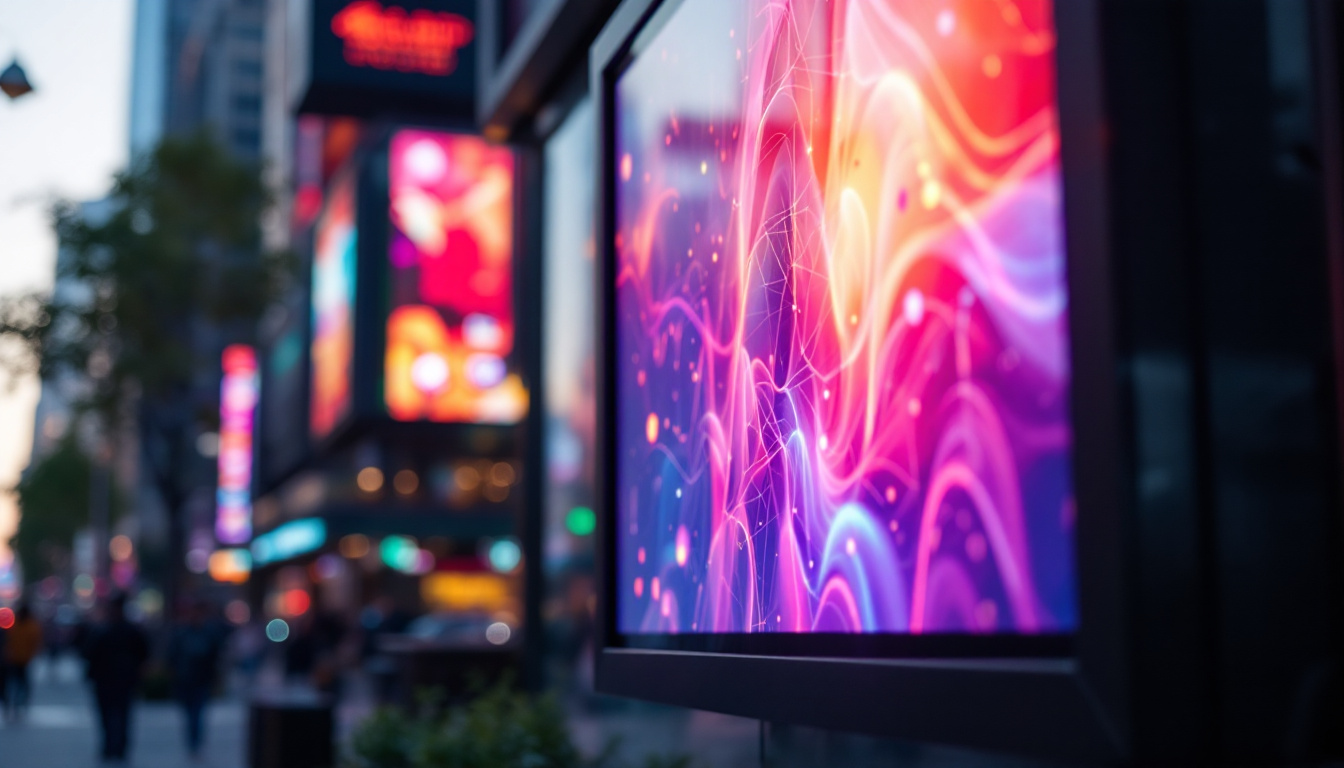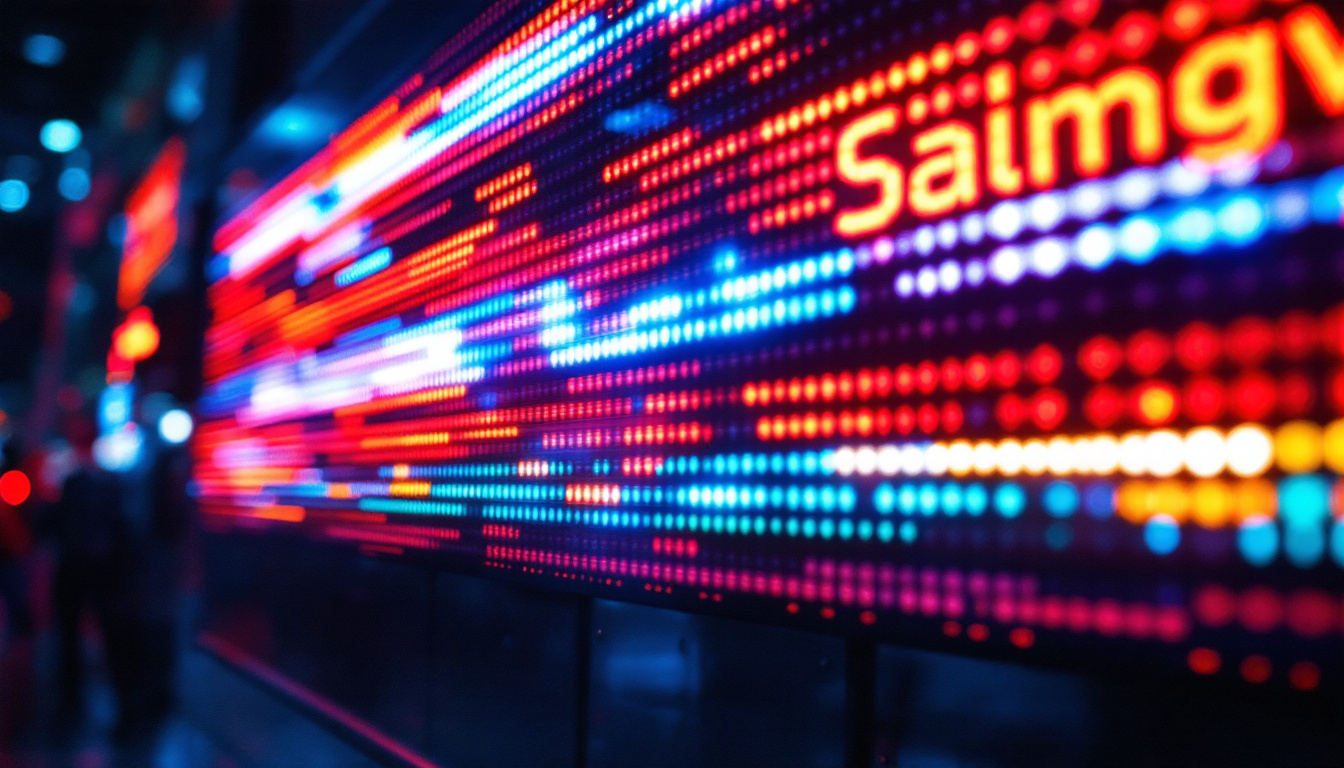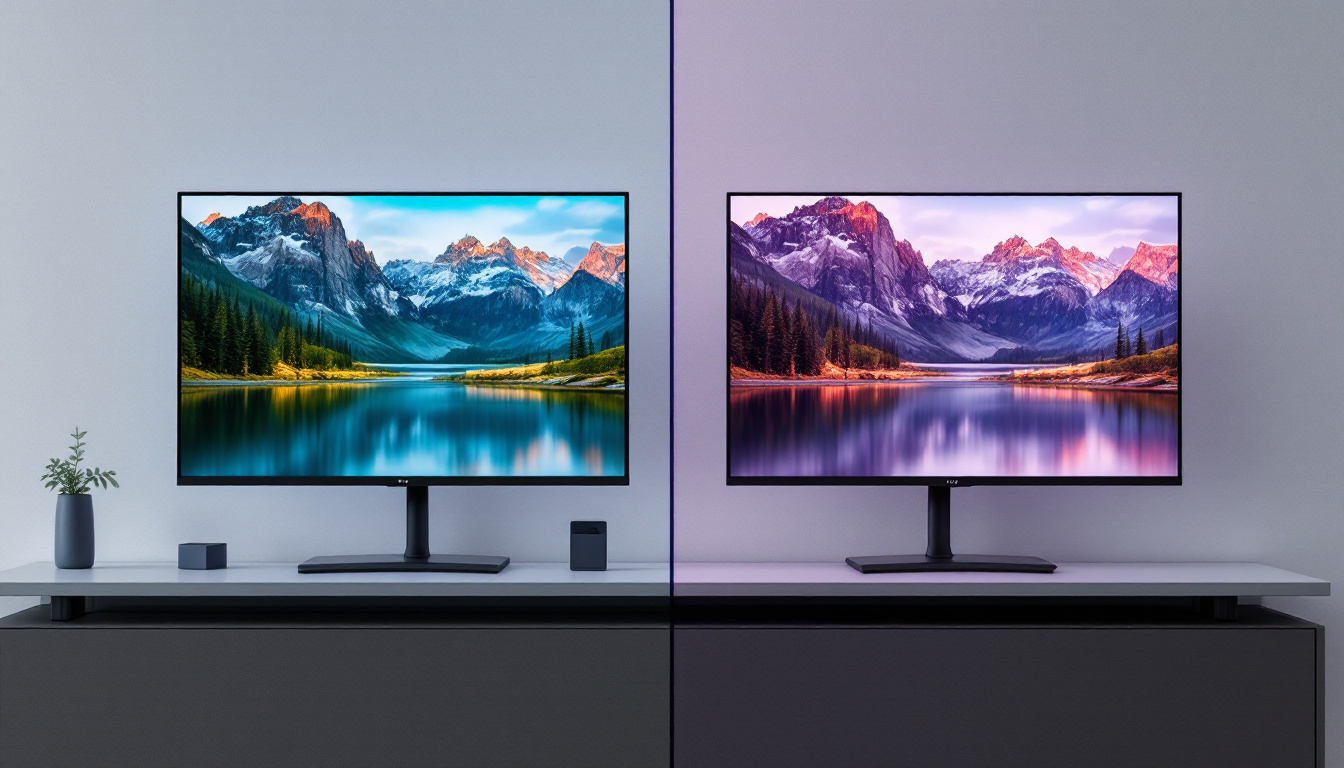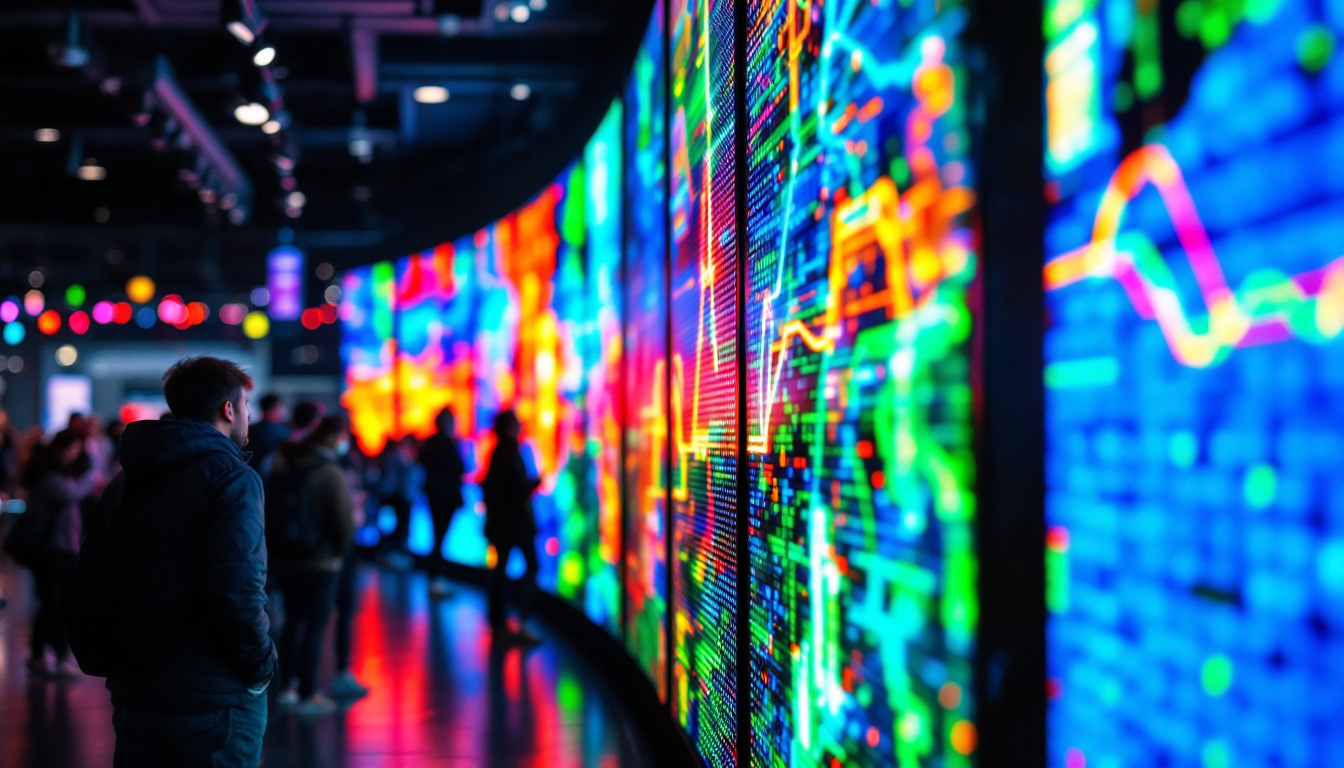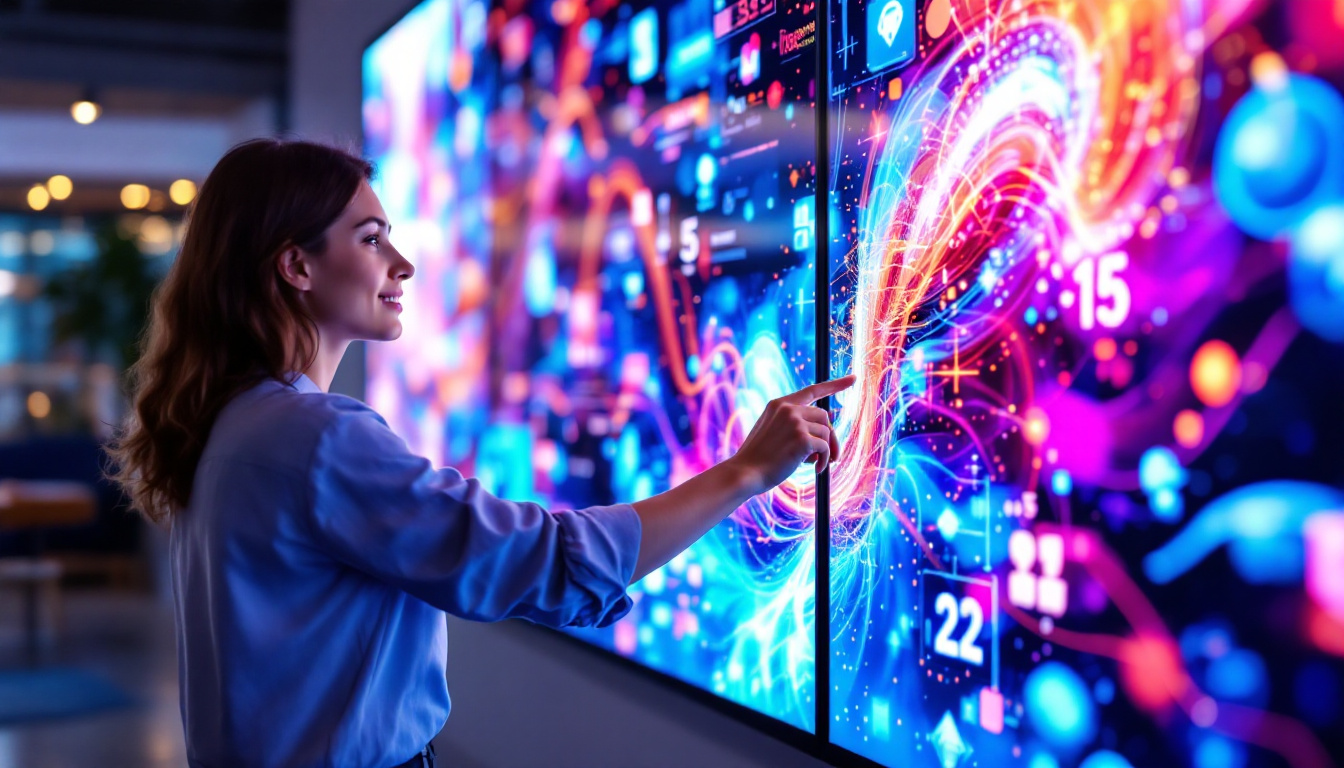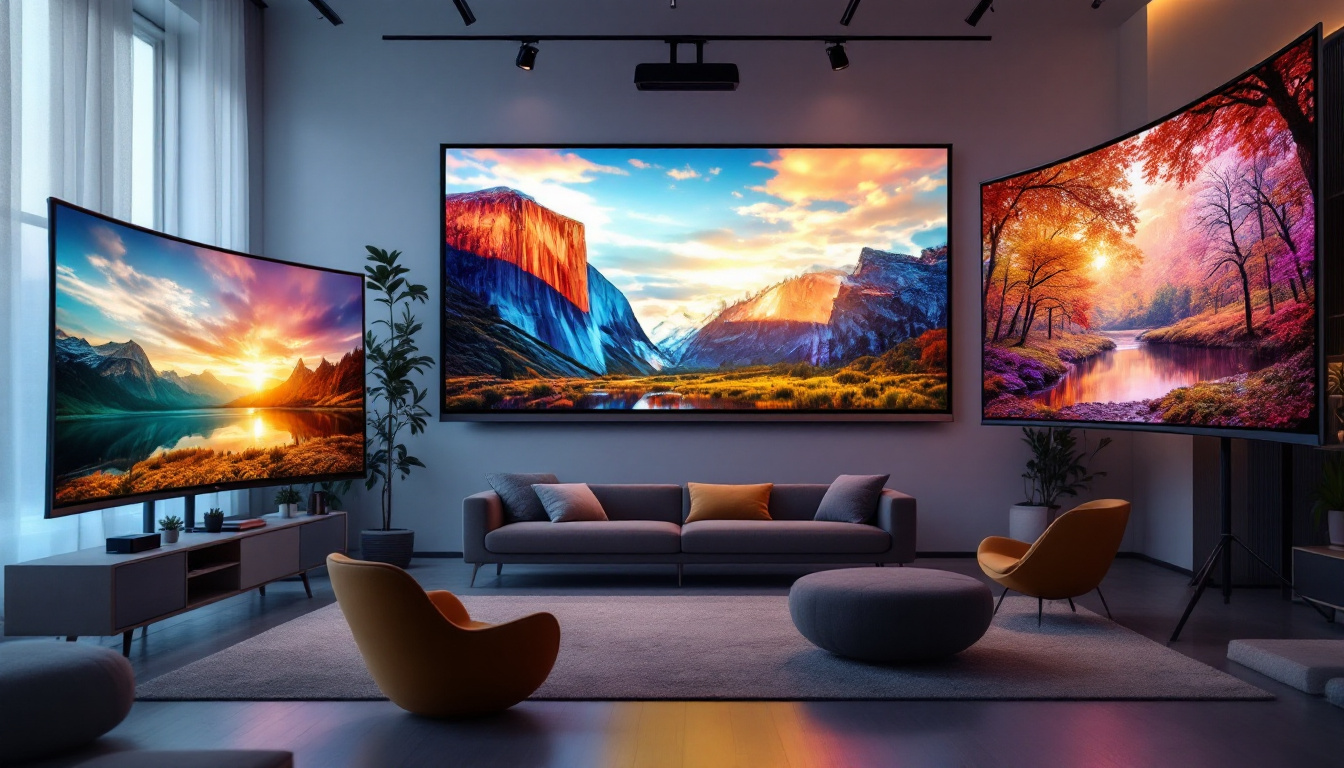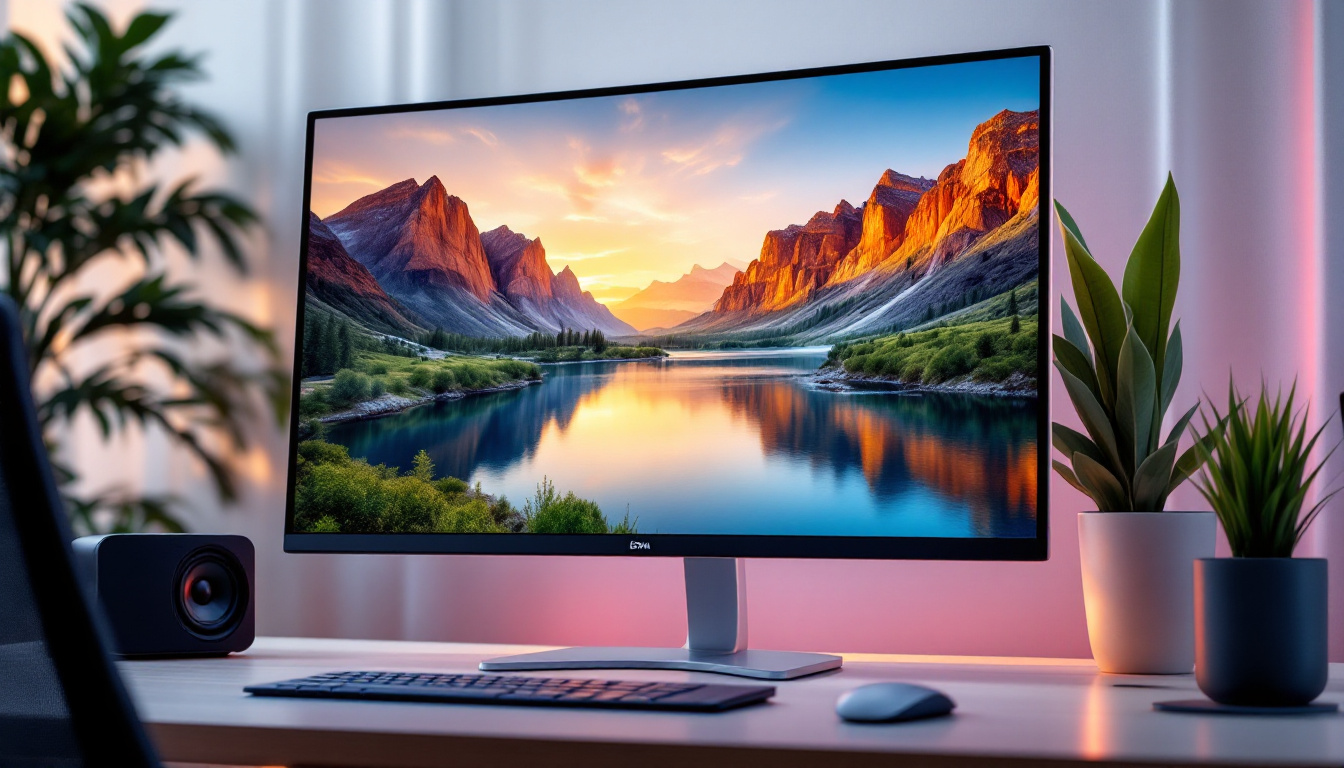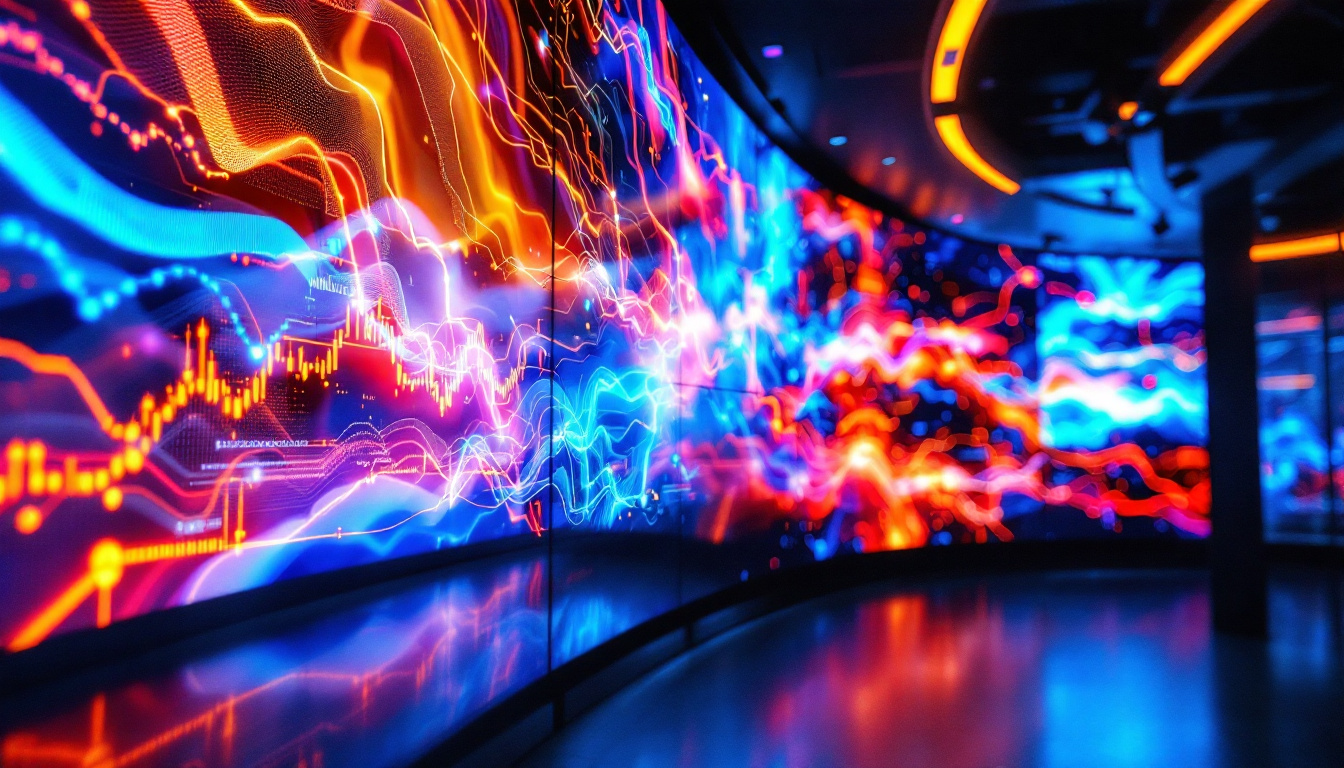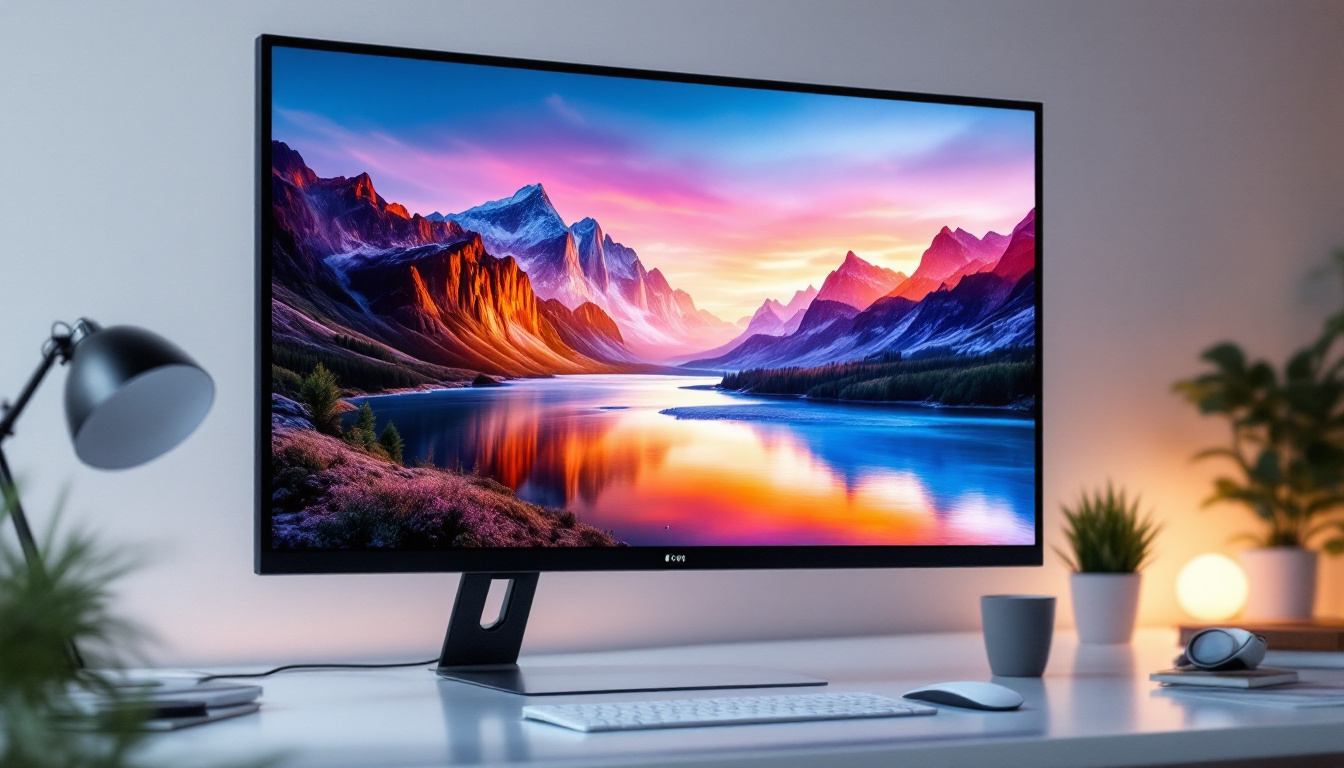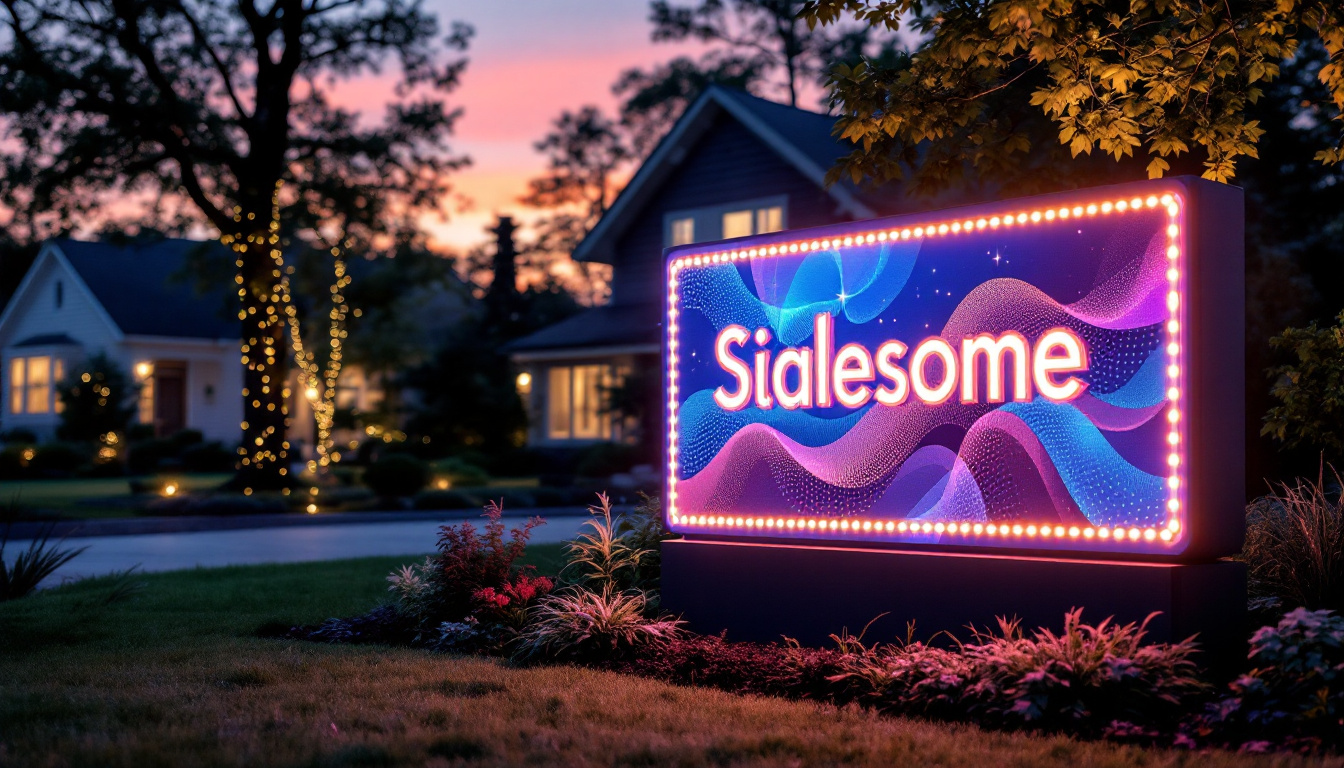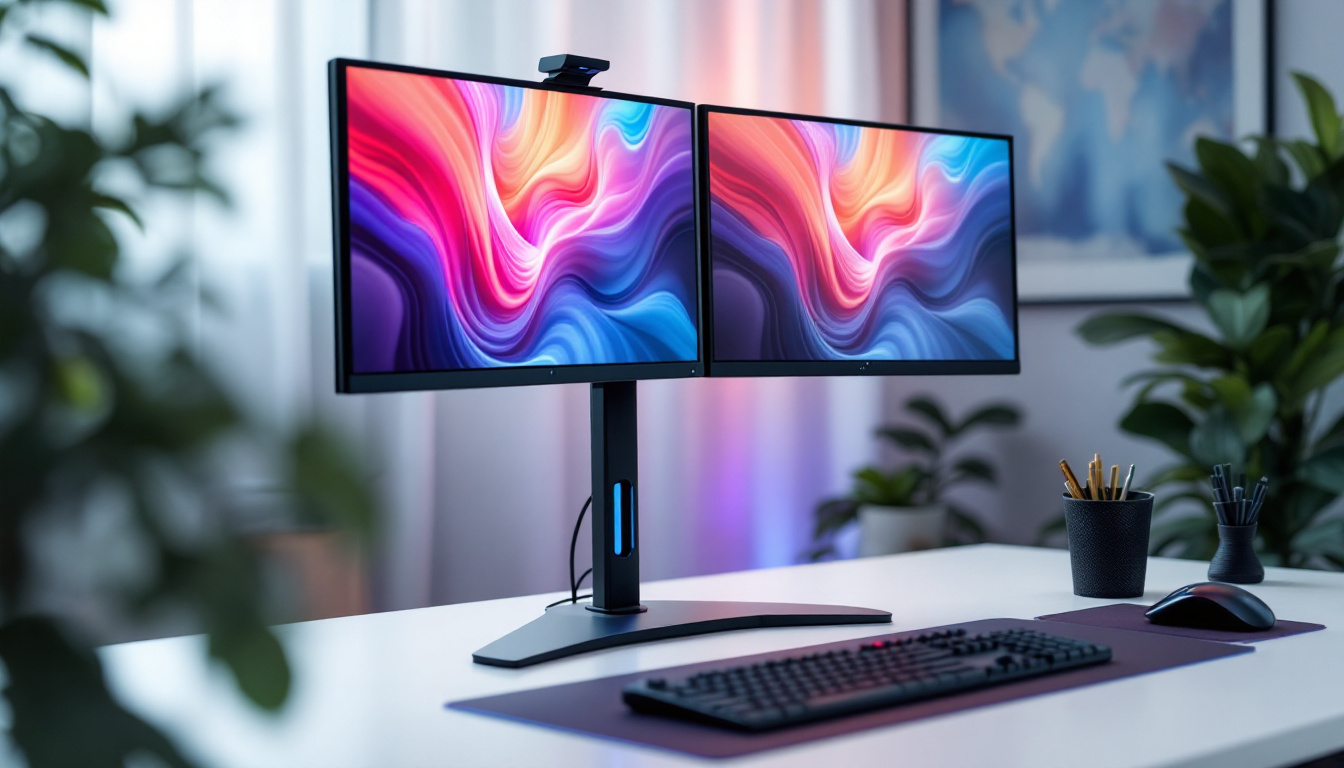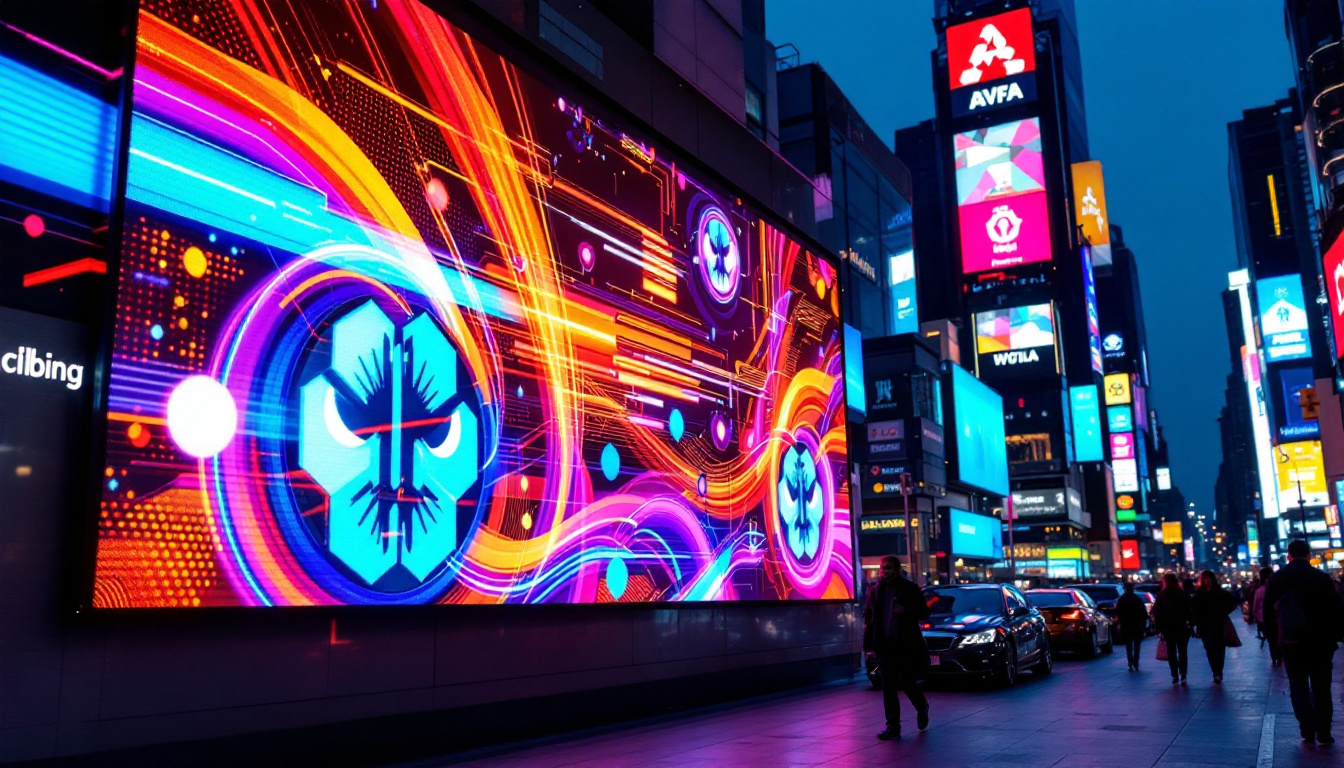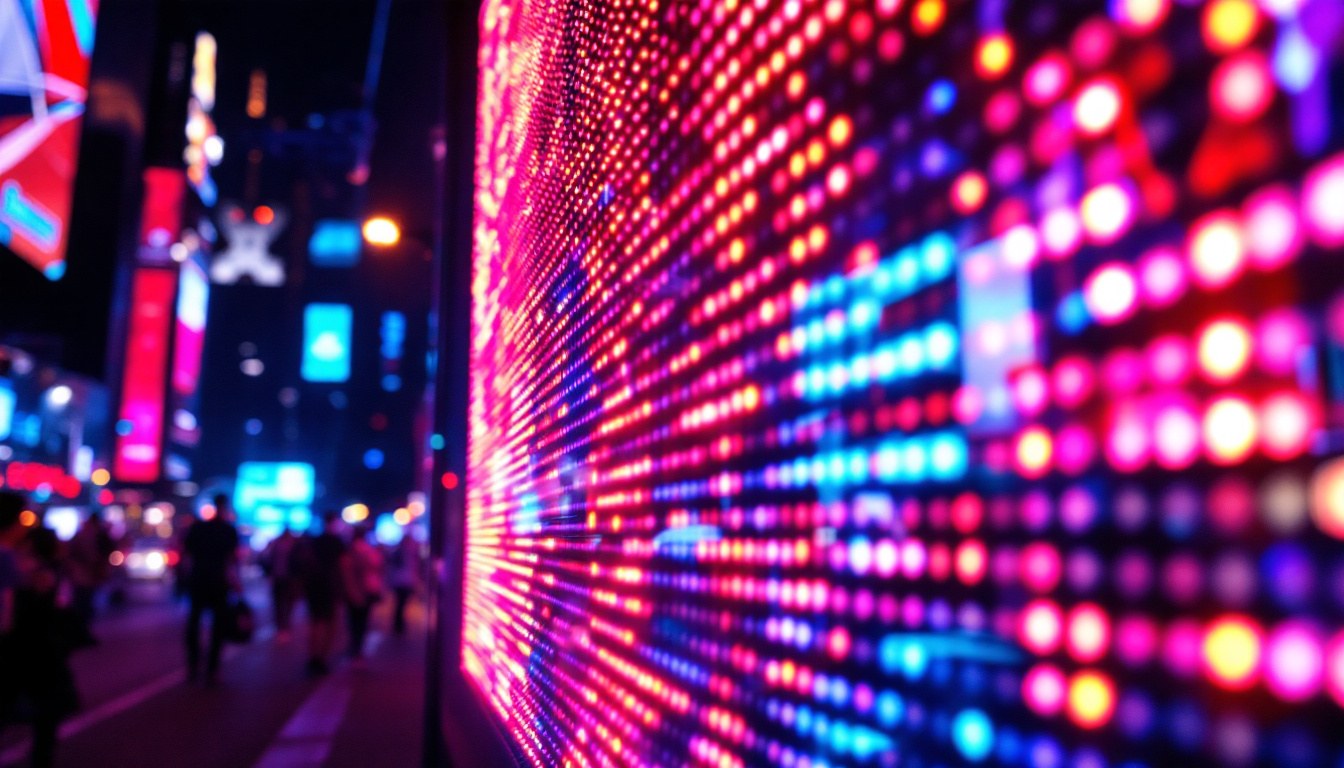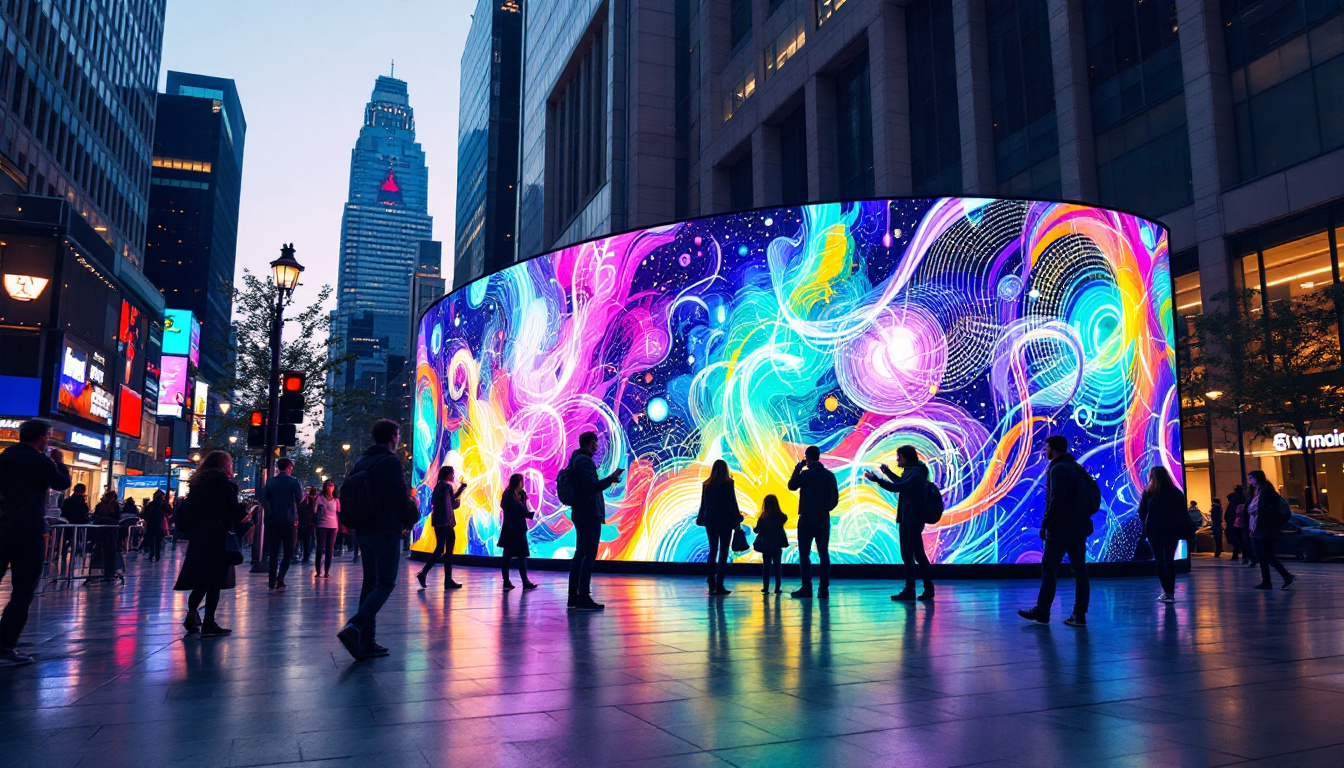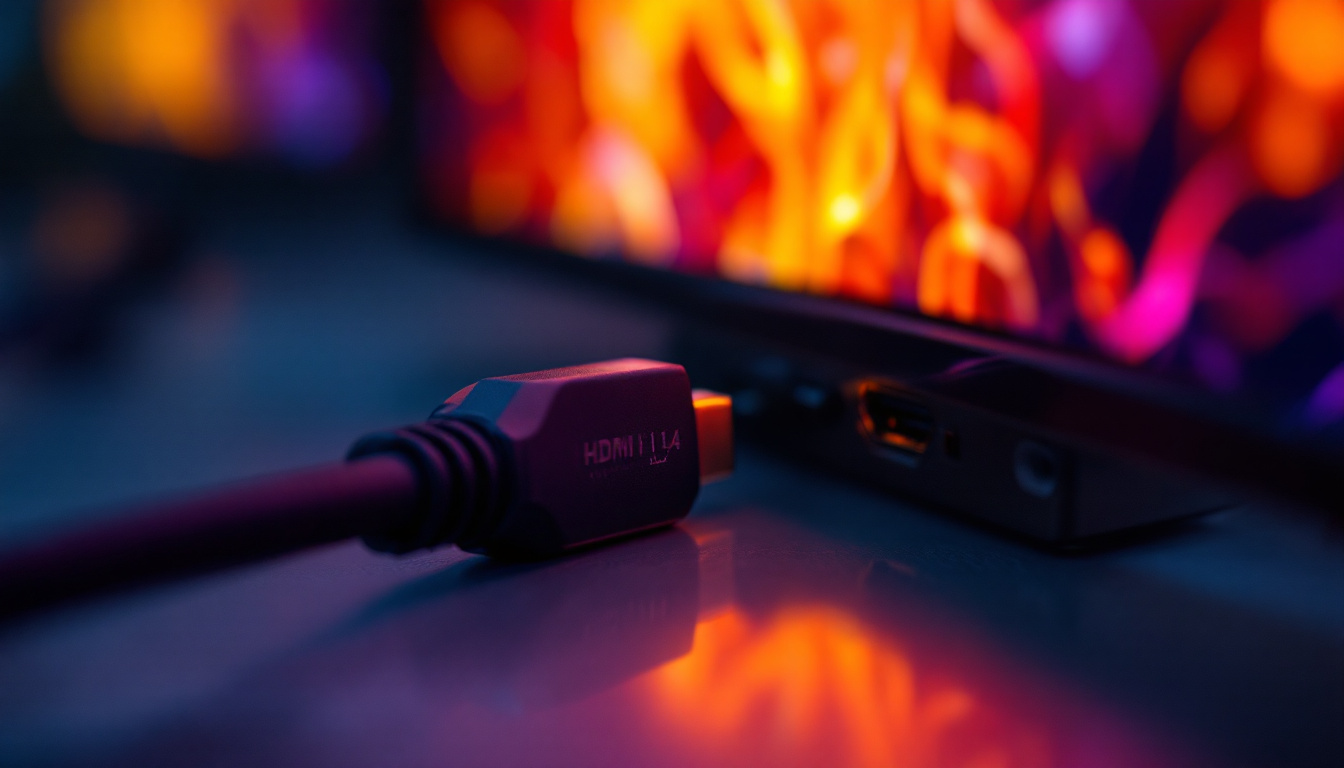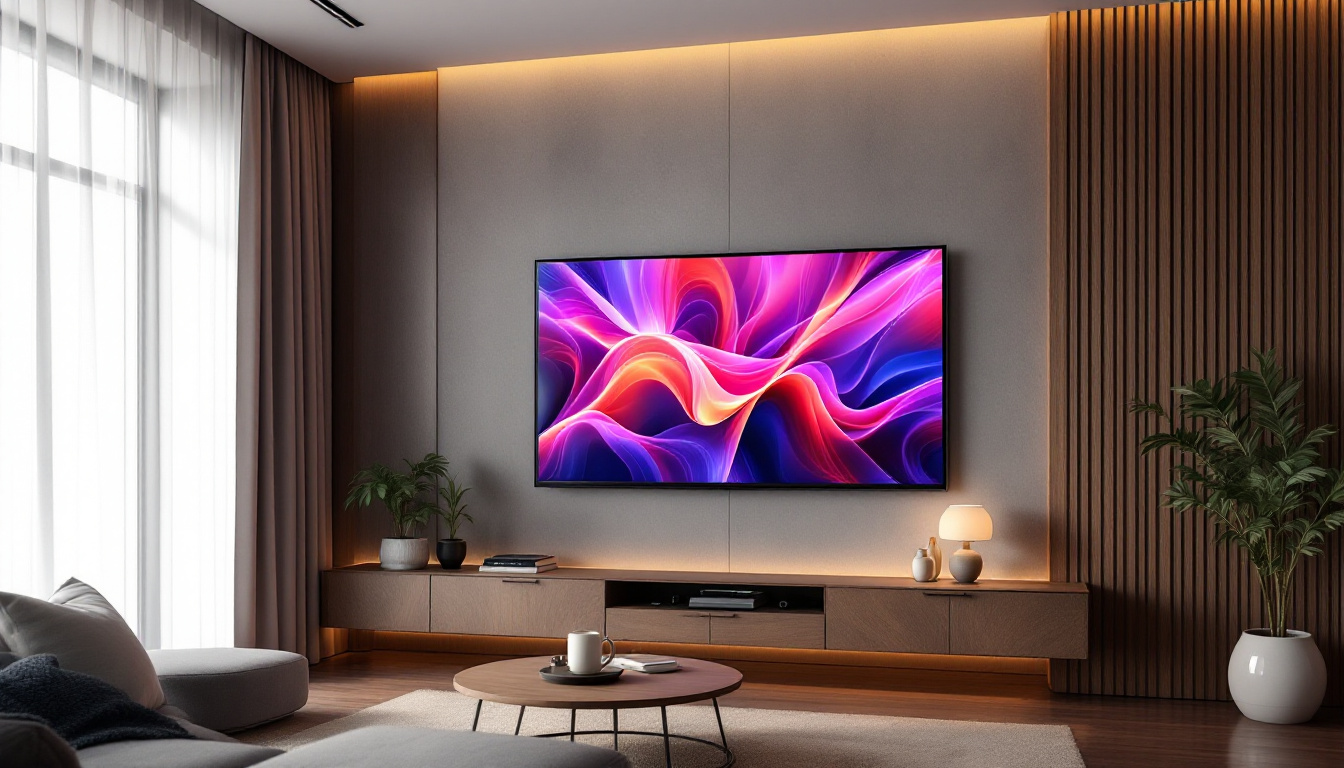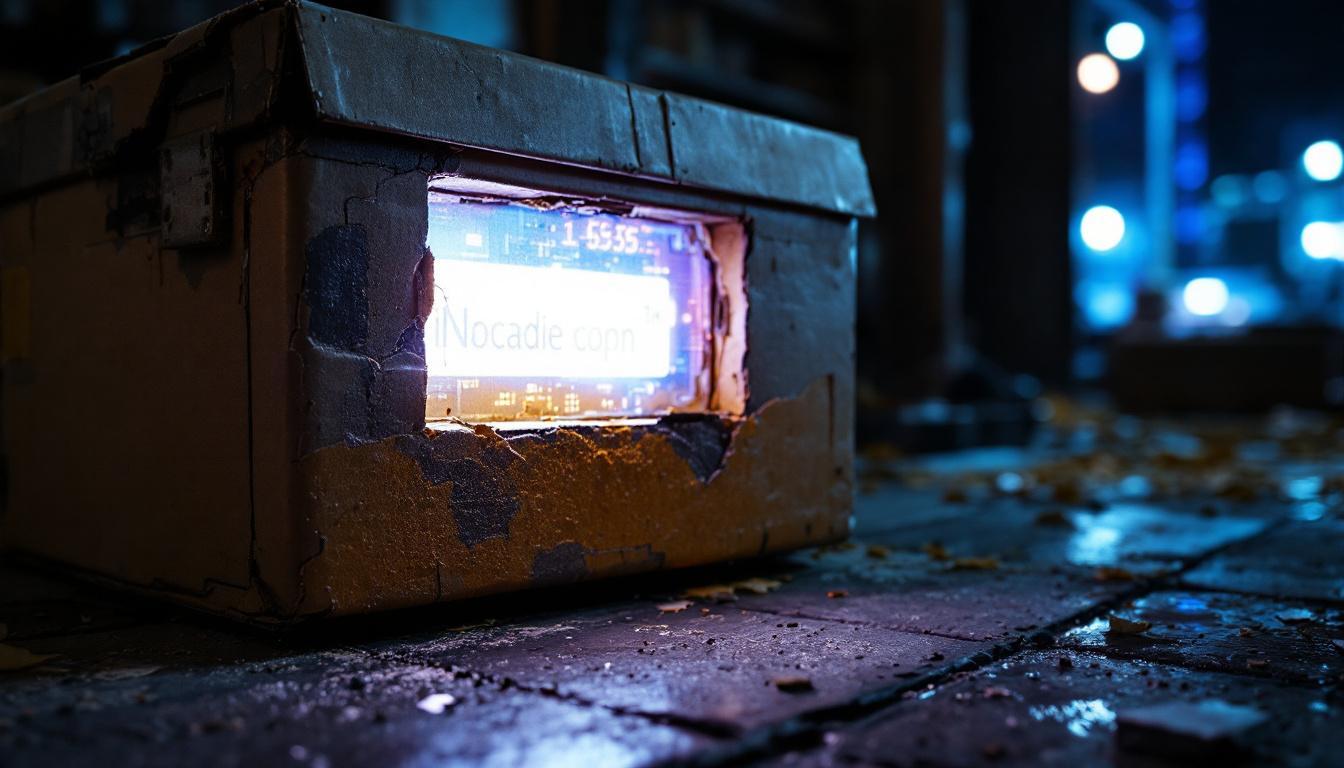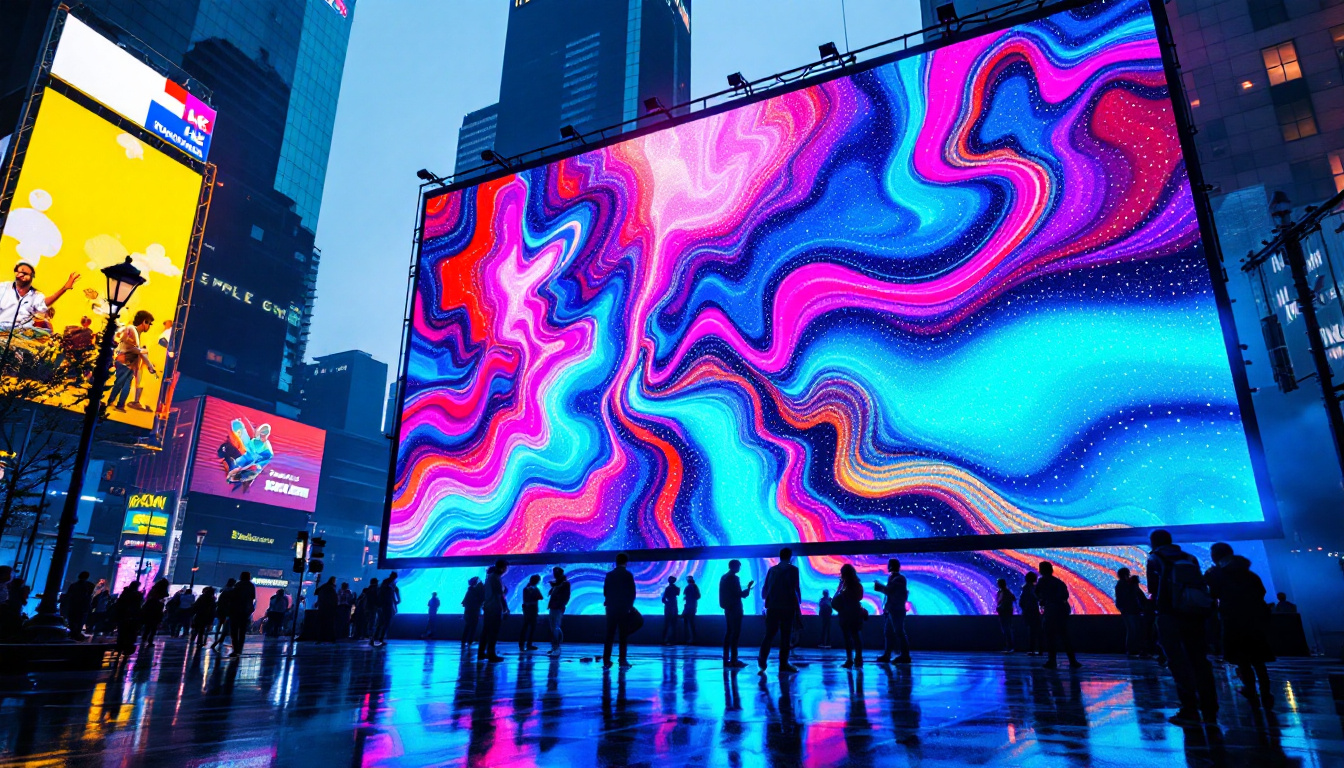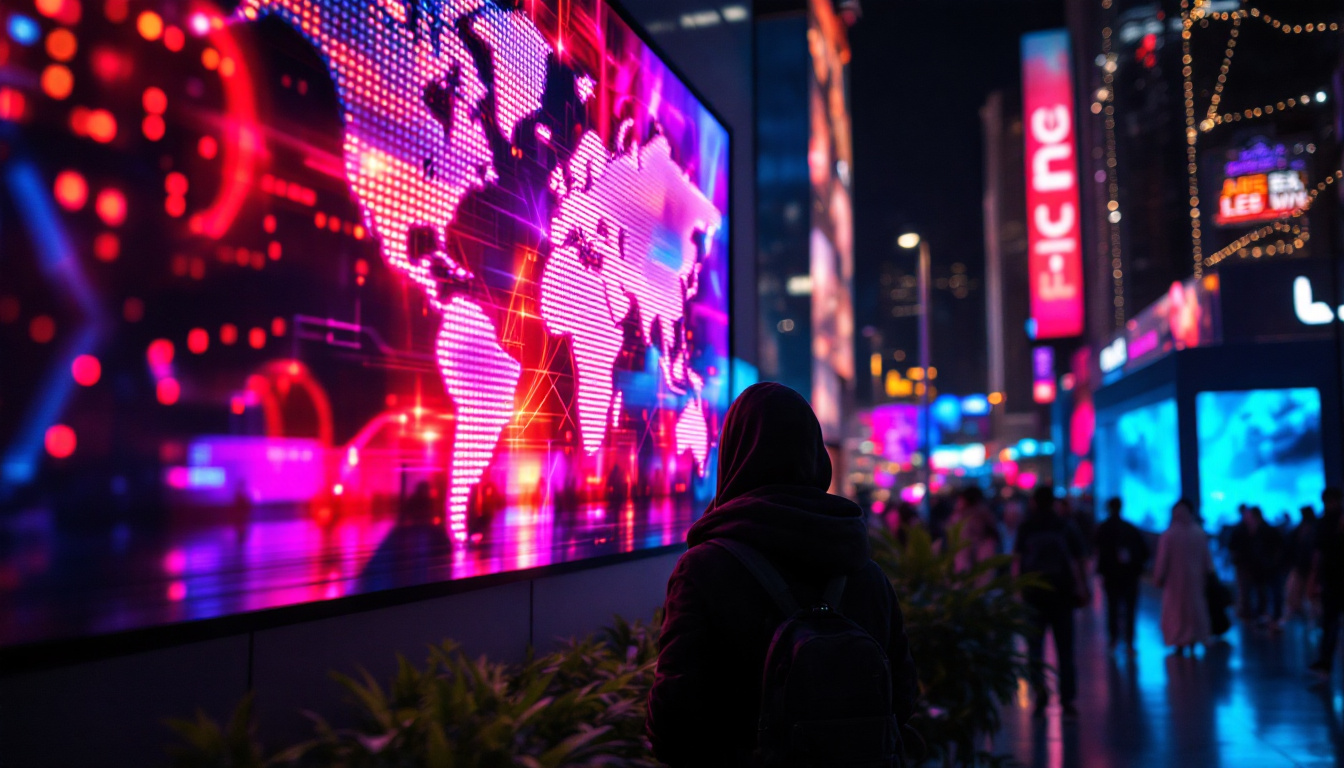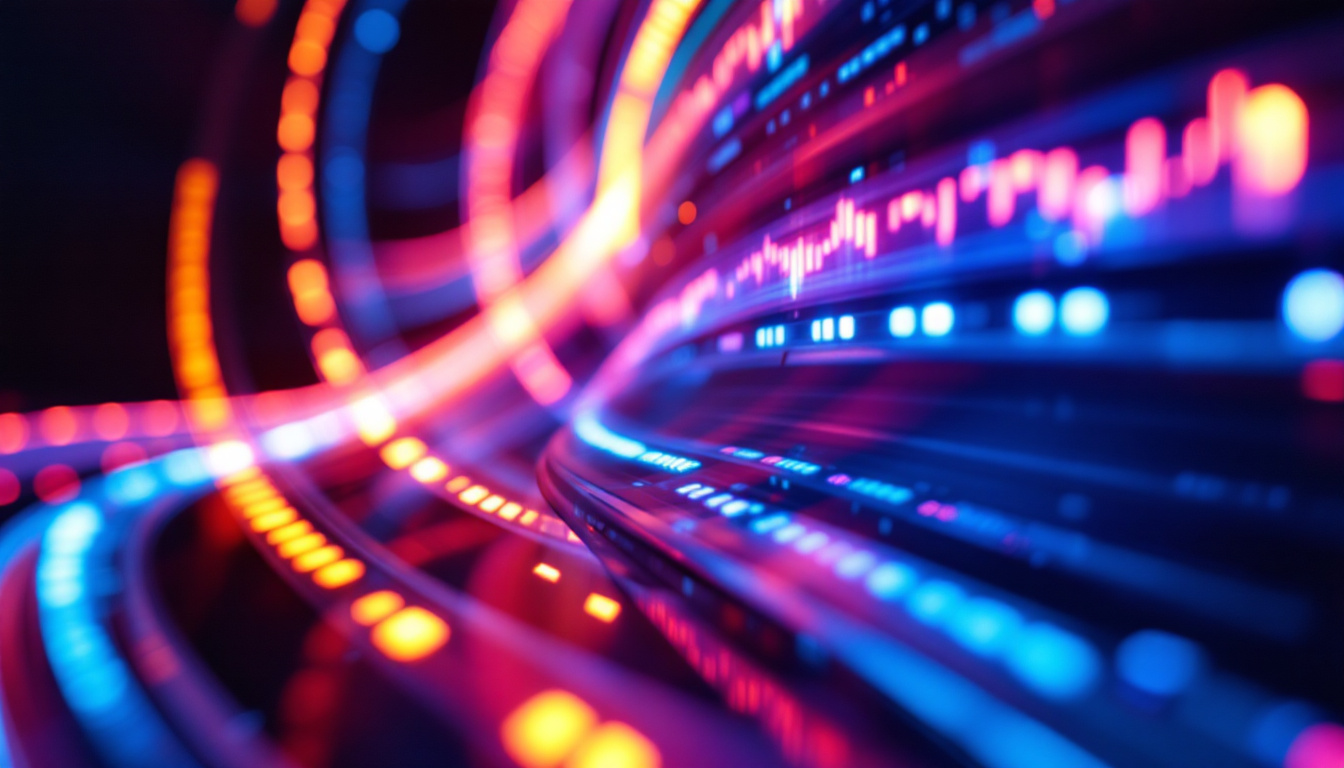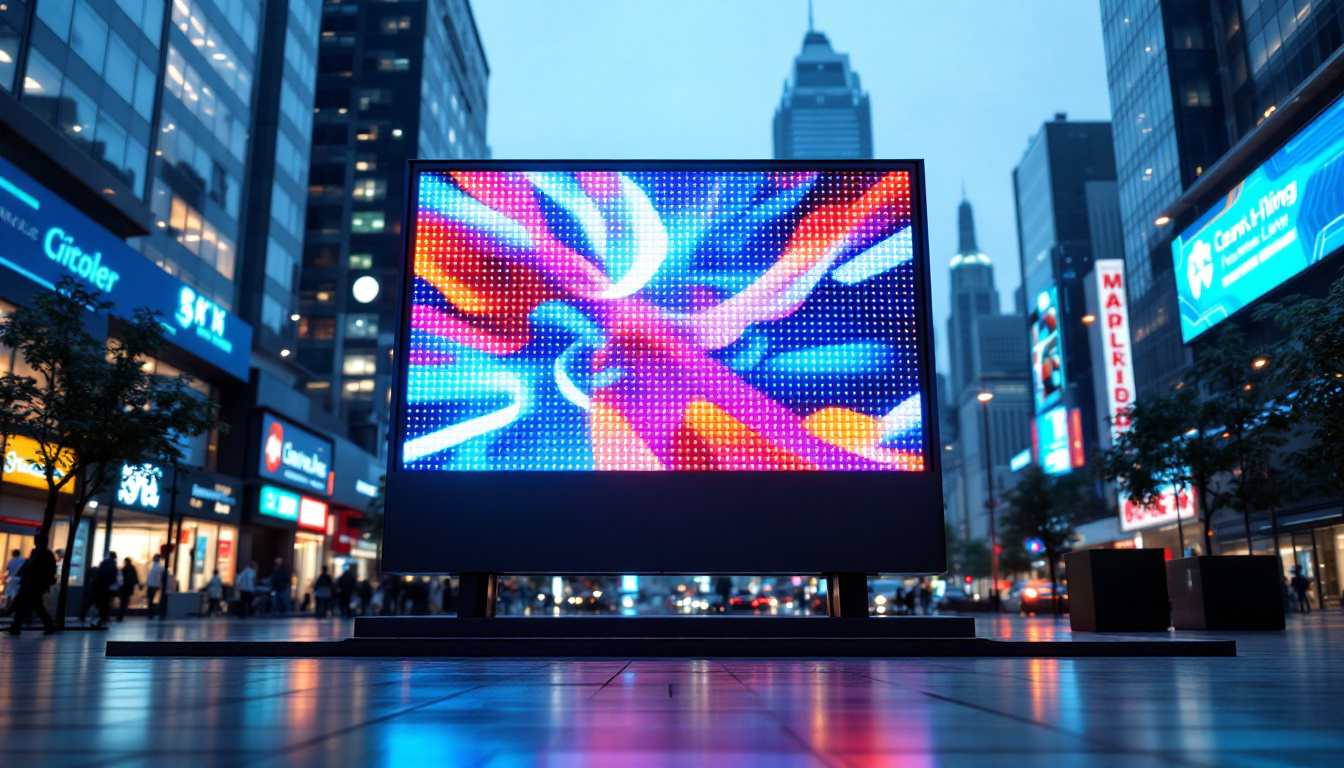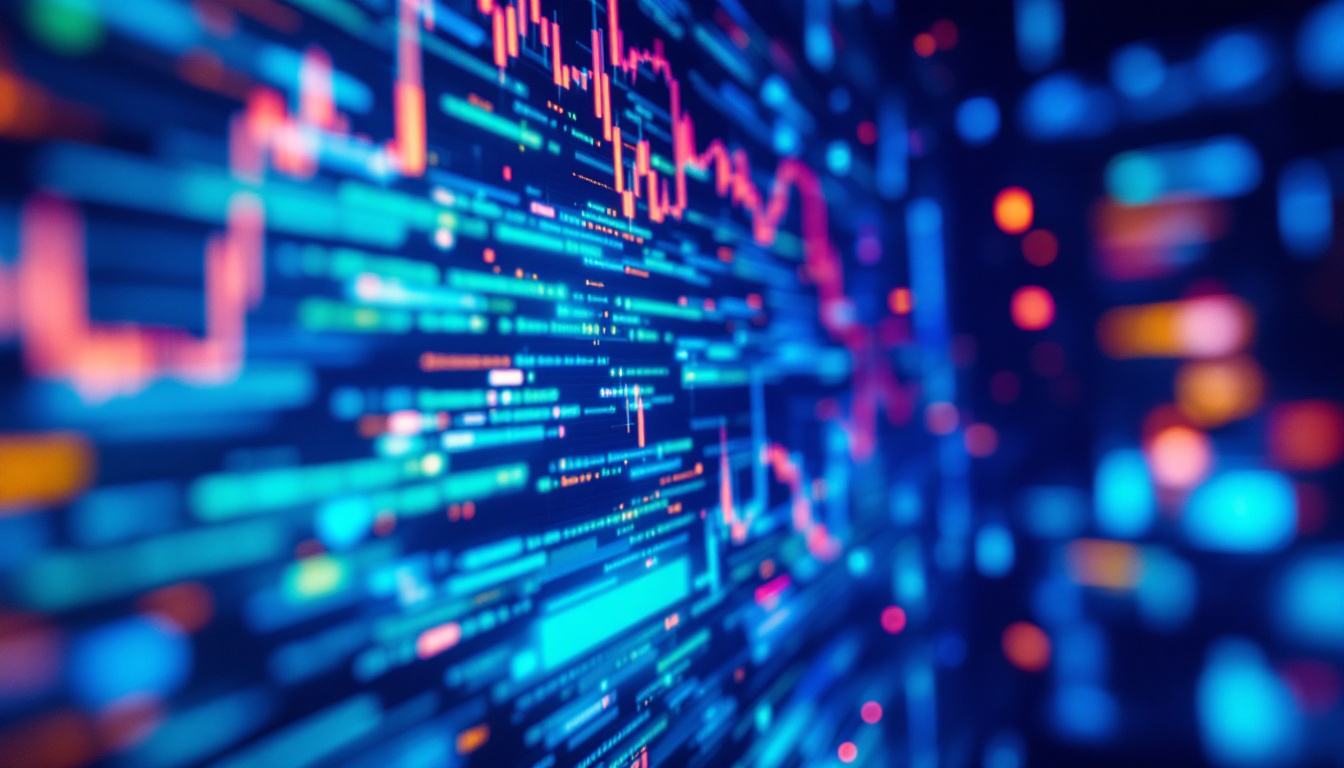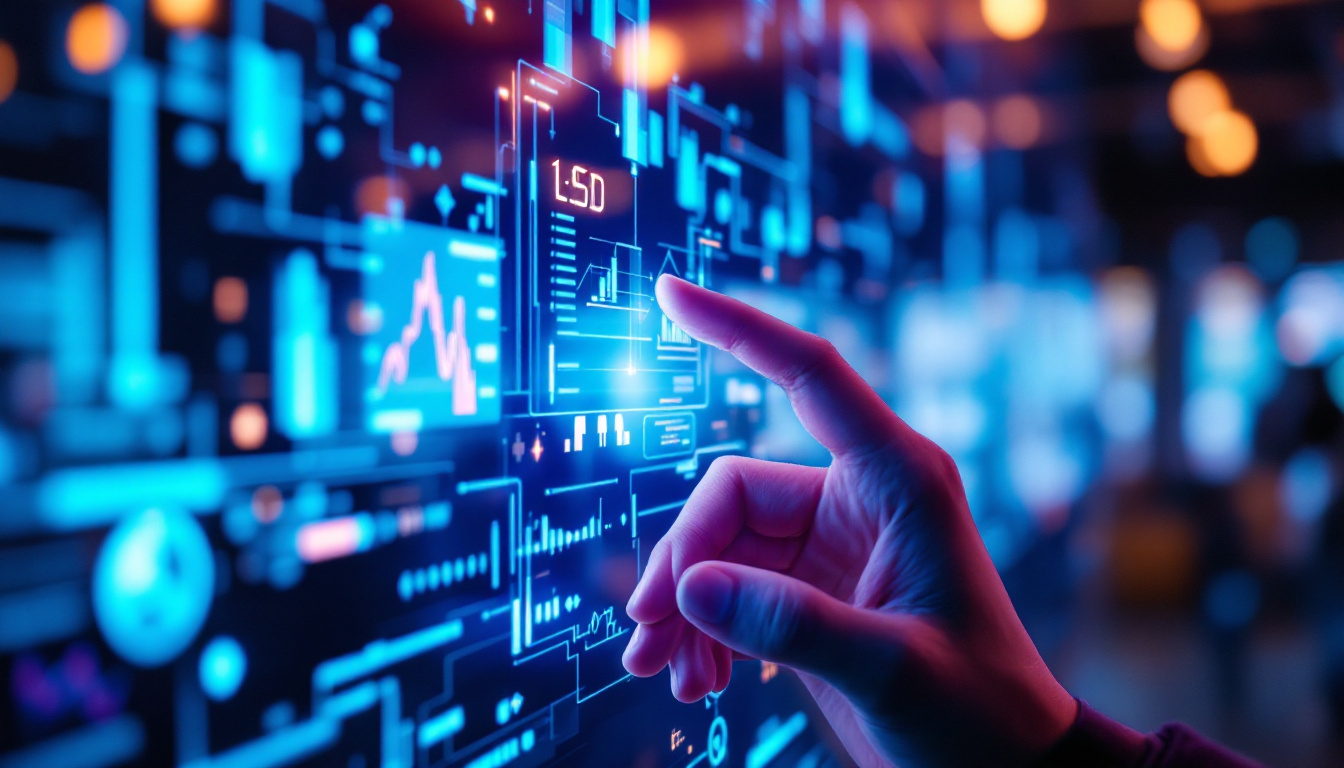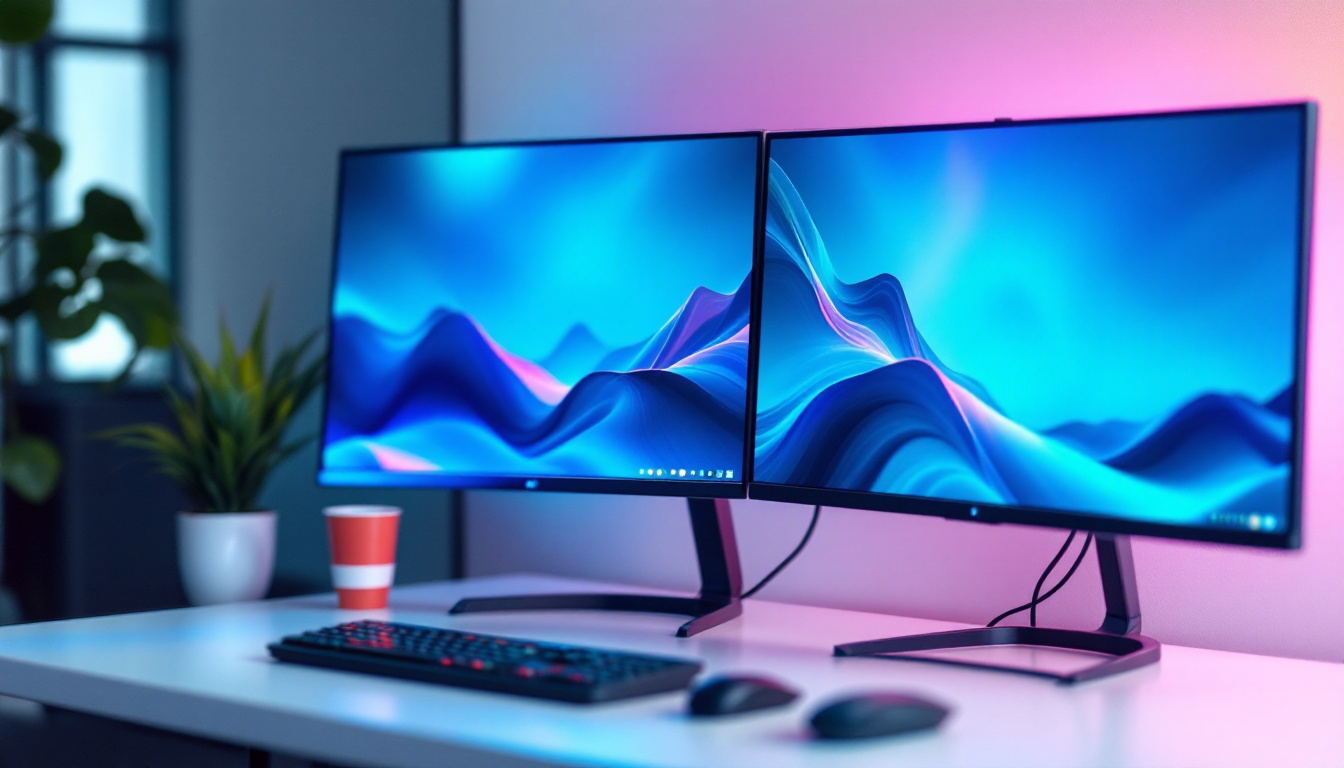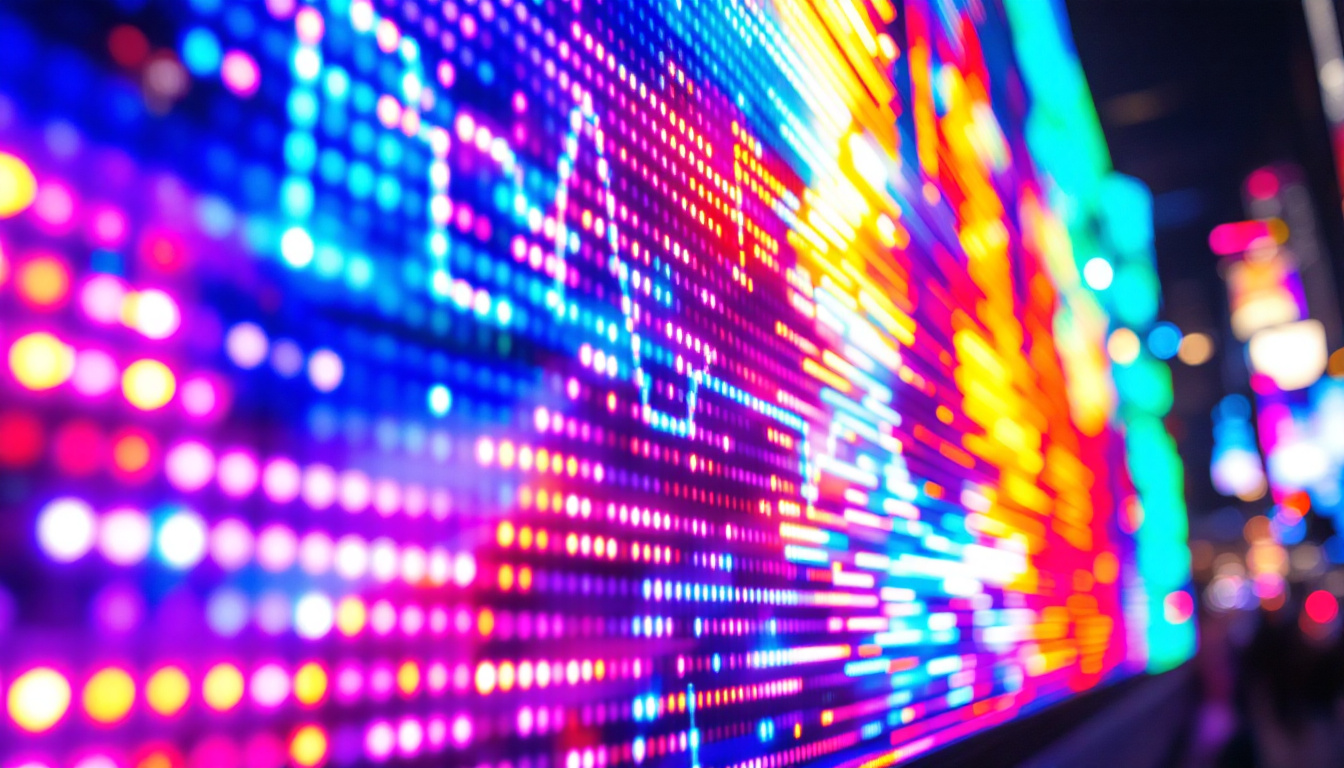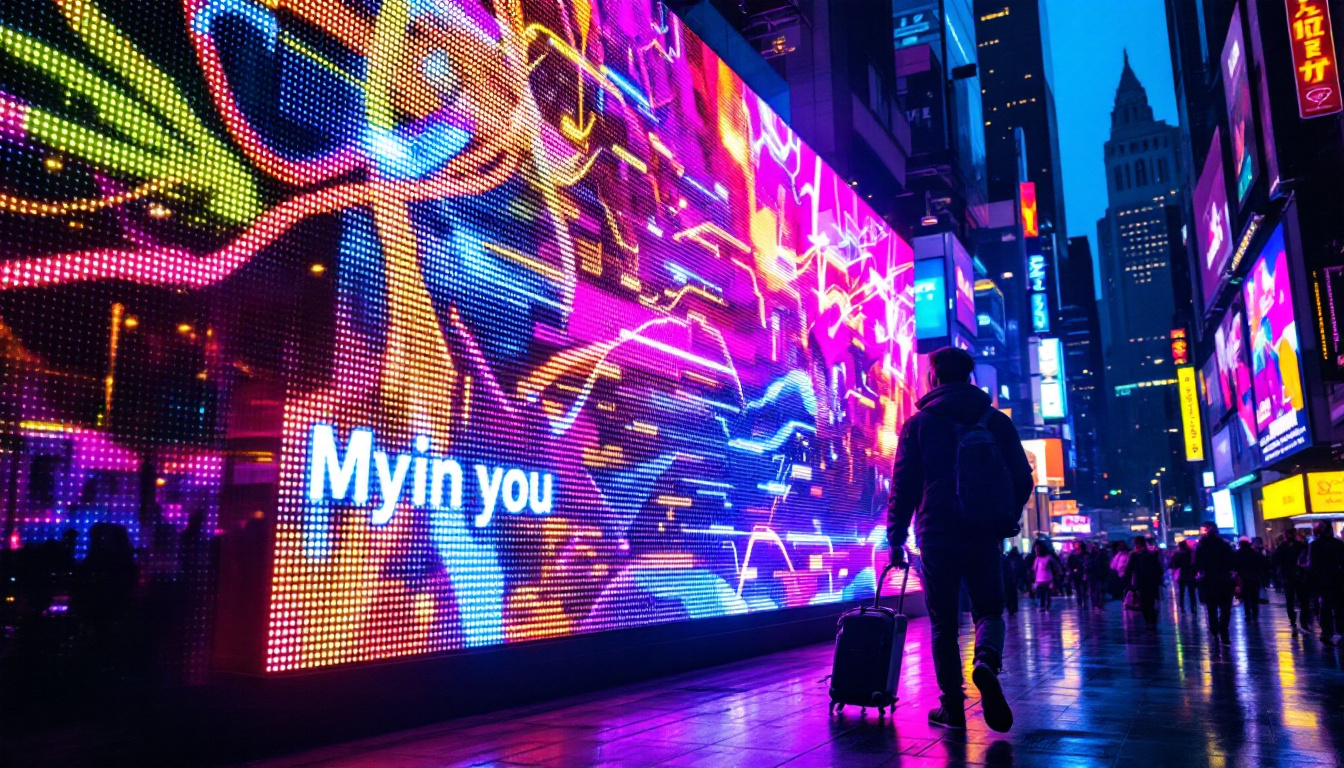In today’s fast-paced digital world, LED displays have become a ubiquitous part of our daily lives. From billboards to smartphones, these vibrant screens capture attention and convey information effectively. This article delves into the intricacies of LED displays, focusing on their technology, applications, and benefits.
Understanding LED Technology
LED, or Light Emitting Diode, is a semiconductor device that emits light when an electric current passes through it. This technology has revolutionized the way we display information and images, offering a more energy-efficient and versatile alternative to traditional lighting methods. The compact size of LEDs also allows for innovative design possibilities, enabling manufacturers to create thinner and lighter products that were previously unimaginable.
How LED Displays Work
At the core of an LED display are numerous tiny diodes that emit light in various colors. These diodes are arranged in a grid format, allowing them to create images and videos by turning on and off at high speeds. The combination of red, green, and blue (RGB) diodes enables the display to produce a wide spectrum of colors, making it possible to present detailed visuals. The technology behind LED displays also includes advanced drivers and controllers that manage the power and signal to each diode, ensuring that the images displayed are not only vibrant but also consistent across the entire screen.
The brightness and clarity of LED displays are influenced by several factors, including the pixel pitch, which refers to the distance between the centers of two adjacent pixels. A smaller pixel pitch results in higher resolution and better image quality, making it ideal for applications requiring detailed visuals. Additionally, the viewing angle is another critical aspect; modern LED displays are designed to maintain color accuracy and brightness even when viewed from off-angles, enhancing the overall user experience in various settings, from large outdoor billboards to intimate indoor displays.
The Evolution of LED Displays
The journey of LED technology began in the early 1960s, when the first visible-spectrum LEDs were developed. Initially, these diodes were limited to simple indicators and displays. However, advancements in technology led to the creation of full-color LED displays in the 1990s, paving the way for their widespread adoption in various industries. As the technology matured, manufacturers began to explore new applications, leading to the integration of LED displays in everything from automotive lighting to architectural features, showcasing their versatility.
Today, LED displays have evolved to include various types, such as OLED (Organic LED) and MicroLED, each with unique characteristics that cater to specific needs. OLED displays, for instance, offer deeper blacks and better contrast ratios, making them popular for high-end televisions and mobile devices. Meanwhile, MicroLED technology promises even greater efficiency and flexibility, allowing for modular displays that can be resized and shaped to fit any environment. This ongoing innovation in LED technology continues to push the boundaries of what is possible in visual displays, making them an integral part of modern life.
Applications of LED Displays
LED displays are utilized across a multitude of sectors, showcasing their versatility and effectiveness in communication and entertainment. Their adaptability makes them suitable for both indoor and outdoor environments, leading to a wide range of applications.
Advertising and Marketing
One of the most prominent uses of LED displays is in advertising. digital billboards strategically placed in high-traffic areas capture the attention of passersby with vibrant colors and dynamic content. Advertisers can easily update their messages in real-time, allowing for targeted campaigns that can be adjusted based on audience demographics and time of day.
Moreover, LED displays can be integrated into retail environments, enhancing customer experiences. Interactive displays can showcase promotions, product information, and even customer reviews, creating an engaging shopping atmosphere that encourages purchases.
Entertainment and Events
In the entertainment industry, LED displays play a crucial role in enhancing visual experiences. Concerts, festivals, and sporting events utilize large LED screens to broadcast performances, highlight key moments, and engage audiences. The ability to display high-definition video content ensures that attendees have a memorable experience, regardless of their seating location.
Additionally, LED technology is widely used in theaters and cinemas, where it enhances the viewing experience with bright and vivid imagery. The flexibility of LED displays allows for creative staging and immersive environments that captivate audiences.
Transportation and Public Information
LED displays are also essential in transportation systems, providing real-time information to commuters. Train and bus stations often feature LED screens that display arrival and departure times, service updates, and emergency announcements. This ensures that travelers have access to timely information, improving overall efficiency and safety.
Furthermore, municipalities use LED displays for public information campaigns, such as weather alerts, traffic updates, and community events. These displays can be strategically placed in high-visibility areas, ensuring that important messages reach the public effectively.
Benefits of LED Displays
The advantages of LED displays extend beyond their vibrant visuals. Their energy efficiency, durability, and versatility make them an attractive option for various applications.
Energy Efficiency
One of the most significant benefits of LED displays is their energy efficiency. Compared to traditional lighting technologies, LEDs consume significantly less power, resulting in lower electricity bills and a reduced carbon footprint. This energy efficiency is particularly beneficial for large-scale installations, such as outdoor billboards, where energy costs can quickly add up.
Moreover, LED displays generate less heat, which not only contributes to energy savings but also reduces the need for additional cooling systems in enclosed spaces. This aspect further enhances their sustainability and cost-effectiveness.
Durability and Longevity
LED displays are known for their durability and long lifespan. Unlike traditional displays that may be prone to burn-in or degradation over time, LED technology can withstand harsh environmental conditions, making them suitable for outdoor use. They are resistant to shock, vibrations, and temperature fluctuations, ensuring reliable performance in various settings.
The longevity of LED displays means that they require less frequent replacements, resulting in lower maintenance costs over time. This reliability is particularly advantageous for businesses that rely on continuous operation, such as advertising agencies and event venues.
Versatility and Customization
LED displays offer a high degree of versatility, allowing for various sizes, shapes, and configurations. This adaptability makes them suitable for a wide range of applications, from small indoor screens to massive outdoor billboards. Furthermore, they can be customized to fit specific branding needs, ensuring that businesses can convey their messages effectively.
With advancements in technology, LED displays can now incorporate interactive features, such as touchscreens and motion sensors. This interactivity enhances user engagement and opens up new possibilities for creative advertising and communication strategies.
Challenges and Considerations
While LED displays offer numerous benefits, there are also challenges and considerations that must be addressed. Understanding these factors is essential for making informed decisions regarding their implementation.
Initial Costs
One of the primary challenges associated with LED displays is the initial investment. Although prices have decreased over the years, high-quality LED displays can still be relatively expensive compared to traditional display technologies. Businesses must weigh the long-term benefits against the upfront costs to determine if the investment is justified.
However, it is important to note that the energy savings and reduced maintenance costs associated with LED displays can offset the initial expenses over time, making them a more economical choice in the long run.
Technical Expertise
Implementing LED display technology often requires a certain level of technical expertise. Businesses may need to invest in training staff or hiring professionals to ensure proper installation, maintenance, and operation. This requirement can be a barrier for some organizations, particularly smaller businesses with limited resources.
Additionally, as technology continues to evolve, staying updated on the latest advancements and best practices is crucial for maximizing the benefits of LED displays. This ongoing education can be a significant commitment for businesses seeking to leverage this technology effectively.
The Future of LED Displays
The future of LED displays looks promising, with ongoing advancements in technology and increasing applications across various sectors. As the demand for high-quality visual communication continues to grow, LED displays are poised to play a central role in shaping the way information is conveyed.
Emerging Technologies
Innovations such as MicroLED and flexible displays are set to revolutionize the LED market. MicroLED technology offers enhanced brightness and contrast while reducing power consumption, making it a compelling option for high-end applications. Flexible displays, on the other hand, open up new possibilities for creative installations, allowing for curved and unconventional shapes that can adapt to various environments.
Moreover, the integration of artificial intelligence (AI) and machine learning into LED display systems is expected to enhance their functionality. Smart displays that can analyze audience behavior and adapt content in real-time will provide businesses with invaluable insights and enable more effective communication strategies.
Sustainability Initiatives
As environmental concerns continue to rise, the LED industry is increasingly focusing on sustainability. Manufacturers are exploring eco-friendly materials and production processes to reduce the environmental impact of LED displays. Additionally, recycling programs for outdated displays are being implemented to promote responsible disposal and minimize electronic waste.
These sustainability initiatives not only align with global efforts to combat climate change but also resonate with consumers who prioritize environmentally friendly practices. Businesses that adopt sustainable LED solutions can enhance their brand image and appeal to a growing demographic of eco-conscious consumers.
Conclusion
LED displays have transformed the way information is presented and consumed, offering vibrant visuals, energy efficiency, and versatility. Their applications span various industries, from advertising to transportation, making them an indispensable tool for modern communication.
Despite the challenges associated with initial costs and technical expertise, the long-term benefits of LED technology far outweigh these considerations. As the industry continues to evolve, embracing emerging technologies and sustainability initiatives will further enhance the value of LED displays.
In a world where visual communication is paramount, LED displays are not just a trend; they are a fundamental aspect of how information is shared and experienced. The future is bright, and LED technology is leading the way.
Discover LumenMatrix LED Display Solutions
Ready to elevate your visual communication with the latest in LED display technology? Look no further than LumenMatrix, a pioneer in crafting immersive and dynamic visual experiences. Whether you’re interested in Indoor LED Walls, Outdoor Displays, or specialized solutions like Vehicle and Sports LED Displays, LumenMatrix has the innovative products to bring your vision to life. Embrace the future of vibrant, energy-efficient, and versatile displays. Check out LumenMatrix LED Display Solutions today and transform the way you share your message with the world.

